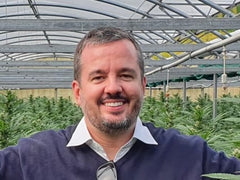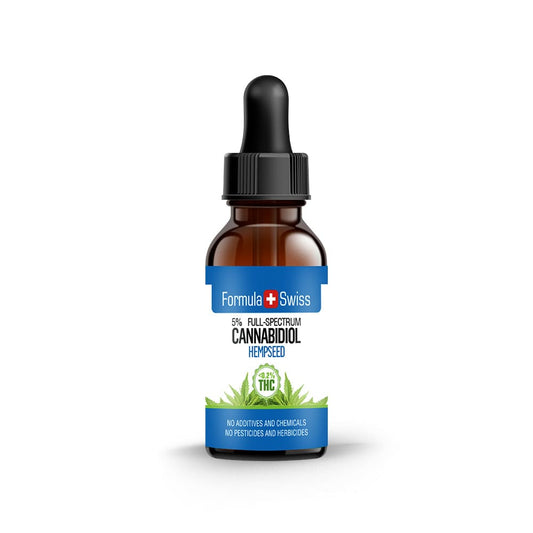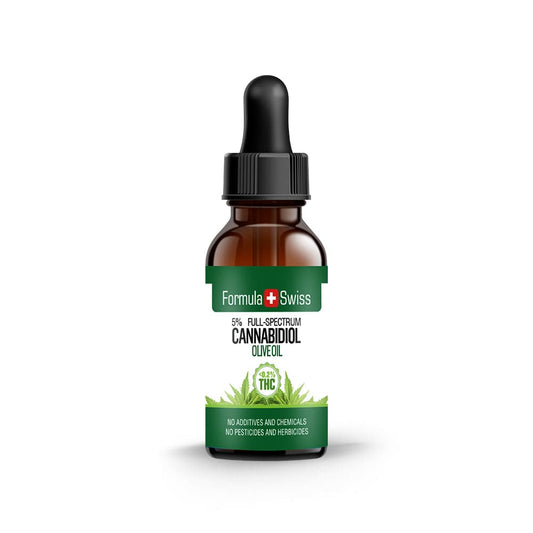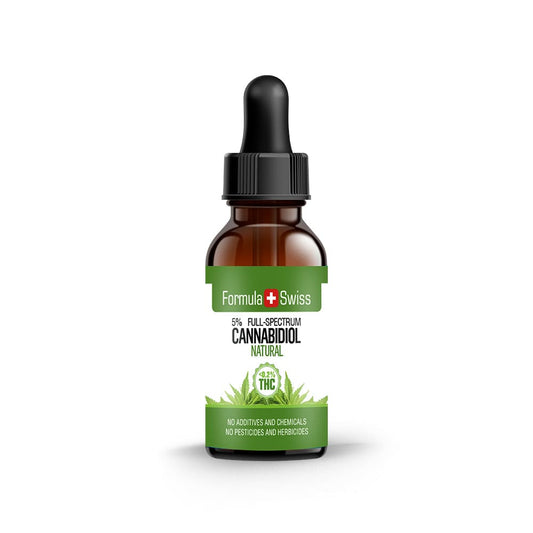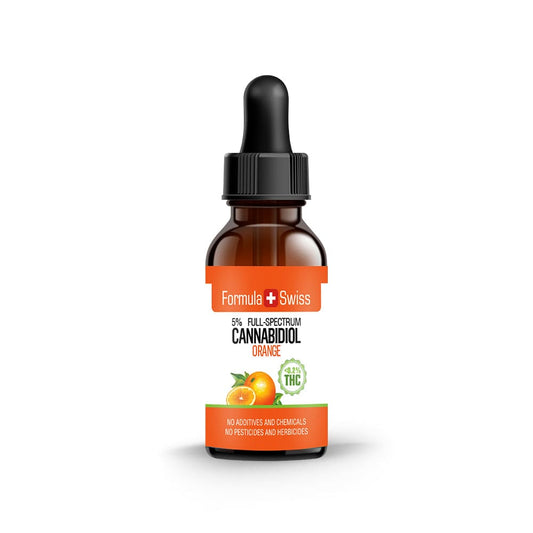THC, or tetrahydrocannabinol, is the main psychoactive compound in the cannabis plant and is best known for producing the sensation commonly referred to as being 'high'. As interest in cannabis grows, both in the context of medicinal research and recreational use, understanding the role of THC has become increasingly important.
It is worth noting, however, that THC is only one of more than 100 cannabinoids identified within the complex chemical structure of the cannabis plant.
With over a decade of experience in the cannabis industry, particularly in CBD and hemp production, I have seen first-hand the progress made in scientific understanding and the shift in public awareness regarding cannabinoids.
This growing body of research highlights the importance of examining THC not only for its psychoactive properties but also for its broader significance within cannabis science and its potential applications across multiple sectors.
Prefer watching over reading? This video covers the key points from the article:
Key takeaways
- THC is the primary psychoactive compound in the cannabis plant, inducing the 'high' sensation.
- It is one of over 100 cannabinoids present within cannabis and marijuana, highlighting the plant's complexity.
- THC's effects include mood alterations, impaired memory and motor skills, and altered sense of time.
- Research continues into THC's broader scientific and botanical properties.
This article is provided for informational purposes only and does not relate to any of the products available in our webshop. For more information, please see our full disclaimer.

Mechoulam delivering a lecture with the structure of Tetrahydrocannabinol displayed behind him, circa 1964. Image courtesy of Zach Klein, from his documentary "The Scientist".
What is THC?
The discovery of THC dates back to the 1960s, when the compound was first isolated and synthesised. This breakthrough marked a turning point in cannabis research, advancing scientific understanding of its psychoactive properties and laying the foundation for decades of further study into the characteristics and potential applications of this key cannabinoid.
Background and discovery
In 1964, Israeli scientist Dr. Raphael Mechoulam successfully isolated THC, transforming the scientific understanding of cannabis. This milestone was a critical step in identifying the cannabinoid responsible for the sensation commonly described as a 'high' and opened the door to more advanced research into the plant’s chemical composition.
Since its discovery, THC has remained a central focus for researchers examining its psychoactive properties and its place within the broader study of cannabinoids.
Over the decades, research has advanced considerably, deepening understanding of THC’s chemical structure, behaviour and interactions within cannabis plants. These studies have established THC as a key reference point in cannabis science and continue to drive interest in its role within botanical and industrial contexts.
What is the chemical structure of THC?
THC, scientifically known as delta-9-tetrahydrocannabinol, is unique in its molecular composition. The compound's chemical structure highly binds it to the brain's CB1 receptors, accounting for the ensuing psychoactive effects.
When THC interacts with the endogenous cannabinoid system, a series of events unfolds, compromising mood, perception, and various physiological processes.

"The chemical structure of THC enables it to bind powerfully to the brain's CB1 receptors, triggering the psychoactive effects characteristic of cannabis."
Find your CBD oil with less than 0.2% THC today
Comparing THC with other cannabinoids
Among the many known cannabinoids, THC and CBD (cannabidiol) have attracted the most attention in scientific research. The following table highlights the primary differences between these two compounds.
| Property | THC | CBD |
|---|---|---|
| Psychoactivity | Yes | No |
| CB1 receptor affinity | High | Low |
| Mood and perception alteration | Significant | Minimal |
Synthetic THC-based medicines have been developed under regulated medical programmes. Their use is strictly controlled and varies by jurisdiction.
THC and the endocannabinoid system
Tetrahydrocannabinol (THC) interacts with the body through the endocannabinoid system (ECS), a cell-signalling network present in humans and many animals. The ECS is made up of cannabinoid receptors (CB1 and CB2), endocannabinoids produced by the body, and the enzymes that break them down.
THC has been shown to bind mainly with CB1 receptors, which are found in various regions of the brain. This interaction has been widely studied as part of efforts to understand how cannabinoids influence signalling processes within the ECS.
CB2 receptors are more commonly associated with immune-related tissues, and THC also interacts with these, though to a lesser extent. Ongoing research continues to investigate how THC behaves within the ECS and how factors such as concentration, method of use and individual variation may shape this interaction.
What is endocannabinoid system?
What are the key differences between THC and CBD?
THC (tetrahydrocannabinol) and CBD (cannabidiol) are two of the primary cannabinoids naturally found in the cannabis plant. Although both occur within the same species, Cannabis sativa, they differ significantly in their chemical structures.
THC shows a strong affinity for CB1 receptors within the endocannabinoid system, which helps explain its distinctive properties. CBD interacts with the system in a different way, influencing receptor activity without producing the same psychoactive response as THC.

Psychoactive vs. non-psychoactive
One of the most significant differences between THC and CBD is their psychoactive properties. THC is known for producing psychoactive effects, which may alter mood, sensory perception, and cognition.
In contrast, CBD is non-psychoactive, meaning it does not cause alterations in consciousness or sensory perception. This makes CBD appealing to individuals who prefer to avoid psychoactive experiences.
Applications and usage
THC and CBD differ considerably in their common applications. THC is primarily associated with recreational cannabis use, where psychoactivity is desired.
CBD, conversely, is predominantly used in cosmetic industries due to its non-psychoactive profile. CBD products range widely from topical creams to cosmetics, making them accessible to broader consumer groups.
Product availability and forms
Products containing THC are typically restricted to regions where cannabis use is permitted, often through specialised dispensaries or dedicated outlets. In contrast, CBD products have a broader presence, appearing in items such as cosmetics, topicals, skincare, and wellness goods, and are commonly sold both online and in physical retail stores.
Browse CBD oils with less than 0.2% THC
What are the adverse effects of THC?
Scientific research into THC has explored its diverse properties across a range of biological systems. However, it remains important to be aware of the potential adverse effects and risks associated with its use.
The side effects of THC can be both psychological and physiological, with their severity varying depending on the individual and the level of exposure to the psychoactive compound. Scientific studies have explored the potential impact of THC on mental well-being, suggesting that some individuals may experience heightened alertness, unease, or anxiety, particularly those with a predisposition to such conditions (e.g., Crippa et al., 2009; Freeman et al., 2015). These responses tend to vary based on individual sensitivity, dosage, and environmental factors.
Scientific studies have explored the potential impact of THC on mental well-being, suggesting that some individuals may experience heightened alertness, unease, or anxiety, particularly those with a predisposition to such conditions (e.g., Crippa et al., 2009; Freeman et al., 2015). These responses tend to vary based on individual sensitivity, dosage, and environmental factors.
Research has suggested that higher concentrations of THC may be linked with short-term cognitive changes, including challenges with memory, attention and motor coordination (Curran et al., 2002; Broyd et al., 2016). In some instances, altered sensory perception — such as unusual thoughts or feelings — has been reported, particularly among individuals with existing mental health vulnerabilities (Murray et al., 2017).
These findings are based on clinical research and self-reported accounts and may not represent the experiences of all individuals.
Extraction methods and solvent removal techniques
In cannabis extraction processes, various methods are used to remove solvents and isolate key compounds such as THC. Each technique offers distinct advantages and challenges, depending on the desired purity and application.
- Chromatography: to separate individual cannabinoids and other compounds.
- Crystallisation: to isolate and collect pure THC crystals.
- Final stages: like decarboxylation, activate the psychoactive properties of the THC.
The final product is a high-quality, pharmaceutical-grade THC that can be further processed for use for its potential in various medical treatments and formulations.
| Extraction method | Pros | Cons |
|---|---|---|
| CO2 extraction | Clean, efficient, high-quality result | Requires specialised equipment, can be expensive |
| Solvent extraction | Relatively simple process, inexpensive | May require additional purification to remove residual solvents |
| Steam distillation | No solvents needed, scalable process | Lower efficiency, potential for heat damage |
| Cold press extraction | Minimal impact on compounds, no residual solvents | Lower yield may require further purification |
What does the future of THC look like?
As cannabinoid research advances, so too does our understanding of THC and its diverse properties. Current areas of exploration include pharmacogenomic interactions, studies on how genetic factors may shape responses to cannabinoids, and evolving legal frameworks that could influence accessibility and regulation.
Research into THC’s broader characteristics continues to highlight new directions for study, expanding knowledge of its place within the wider field of cannabinoid science.

Formula Swiss remains committed to cannabinoid research, focusing on deepening scientific understanding of compounds such as THC through organic cultivation practices and ongoing study.
Growing interest in pharmacogenomics suggests that future research may place greater emphasis on how individual genetic differences relate to cannabinoid interactions. This could provide a more nuanced perspective on THC’s role in biological systems.
At the same time, regulatory developments in many regions are evolving, with laws gradually adapting to reflect changing perspectives on cannabinoids. These shifts highlight a wider recognition of the importance of continued research in this field.
Personal perspective
After years of studying cannabinoids, I continue to see THC as one of the most significant. Its discovery by Dr Raphael Mechoulam in the 1960s marked a turning point in cannabis science and opened the door to decades of research into the plant’s chemistry.
What interests me most is THC’s interaction with the endocannabinoid system, particularly its affinity for CB1 receptors in the brain. This highlights the close connection between plant-derived compounds and biological signalling systems.
Through my experience, the differences between THC and CBD have become clear — not only in their chemical structures but also in how they engage with the endocannabinoid system. THC’s strong binding affinity for CB1 receptors is distinct from the way CBD interacts through other mechanisms.
To me, this underlines why careful, evidence-based research into cannabinoids is essential for the continued progress of cannabis science and the development of appropriate regulations.
At Formula Swiss, we remain committed to advancing cannabinoid research through organic cultivation and scientific study. Our aim is to expand knowledge of compounds such as THC in a way that reflects the highest standards of quality, transparency and integrity.
View our collection of CBD oils with less 0.2% THC here
Frequently asked questions
What is THC?
THC, scientifically known as tetrahydrocannabinol, is the primary psychoactive compound found in cannabis plants. It interacts with receptors in the brain and nervous system, producing the characteristic euphoric sensation often referred to as the "high."
What are the side effects of THC?
The side effects associated with THC use can include dry mouth due to reduced saliva production, heightened heart rate, temporary redness in the eyes, impaired short-term memory and concentration, and for some individuals, heightened anxiety or paranoia.
How long does THC stay in your system?
THC's duration in the body can last up to 30 days, contingent upon several factors including frequency of use, dosage, metabolism rate, and the type of test used to detect it in bodily fluids.
Is THC addictive?
Yes, THC has addictive potential, especially with frequent and heavy use. It can influence the brain's reward system, leading to dependence and withdrawal symptoms upon cessation.
Can you overdose on THC?
While overdosing on THC to the point of fatality is highly unlikely, using excessive amounts can induce intense and uncomfortable symptoms such as severe anxiety, paranoia, and hallucinations, which can be distressing but typically subside without causing long-term harm.
What is the difference between THC and CBD?
THC and CBD are both compounds found in cannabis; however, while THC is psychoactive, altering perception and cognition, CBD is non-psychoactive and is widely studied for its properties without inducing a "high."
Can THC show up on a drug test?
Yes, THC can be detected in drug screenings for a considerable duration after use, potentially showing up in urine, blood, saliva, or hair tests, depending on the timeframe and sensitivity of the test employed.


